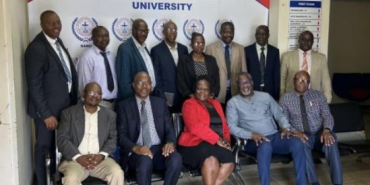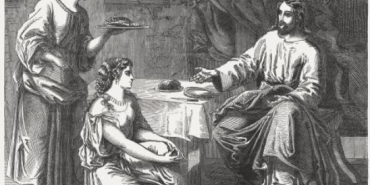Susanna Wesley at 350: Her Life and Writings
Round-number birthdays seem destined for special celebration and serious reflection. Such call for celebration and reflection is coming soon: January 20, 2019 is the 350th anniversary of Susanna Wesley’s birth.
How does the “Mother of Methodism” speak to our condition three and one-half centuries later? Here are four suggested takeaways I would offer based on her own writings, only one of which was published for resale during her lifetime, but all of which still merit reading, especially by those of us who count ourselves part of the Wesleyan tradition.1
1. What you already know about her is true.
Susanna clearly emerges as the more influential parent of John and Charles Wesley. She set them on their way to found a modern-day Christian movement (Methodist, Holiness, and even Pentecostal). She bore and nurtured the two brothers, along with at least 16 other children. Ten survived to adulthood. The home school she set up in the rectory was their first (and for the girls, their only) formal education.
Given the number of her brood, her husband’s duties as Epworth’s parish priest, and the necessity of managing a household with little help (and less money!), she necessarily ran a tight ship in the rectory. There were implications for John and Charles, who learned Christianity as much from her childrearing as they did from their father Samuel’s sermons or their teachers at boarding school and Oxford. In an essay John asked his mother to write in 1732, “On Educating My Family,” Susanna writes, “The children were always put into a regular method of living . . . from their birth” [369]. These “methods of living” were certainly precursors to the disciplined lives her children would embrace.
Susanna initiated the family custom of children “singing psalms at beginning and leaving school” and the older children reading the younger children (one on one) a chapter from the Old Testament and a Psalm in the morning, along with the New Testament in the evening. After this, “they all went to their private prayers” [372]. Her nurture certainly became second nature in what we might call the Wesleyan DNA. It is echoed in all of her writings, which are saturated in Scripture. Her writings are prayerful, realistic about daily life, and thoughtfully aware of current theology, science, philosophy, and poetry.
Though certain methods were controversial 18th-century-based quirks, we may still gratefully acknowledge that Susanna the “methodical,” loving mother and educator has much to teach us [367-376].
2. She continued teaching her children into their adulthood.
Late 17th-century England was not well known for girls’ education, but the Protestant interest in literacy, together with the new technology that allowed for the inexpensive publication of books and periodicals was beginning to change that. In an age that historians call “The Enlightenment,” science, philosophy, history, and human experience began to influence both secular culture and religion. Women were beginning to read, write, and study. Susanna was one of the many who felt God’s call to do so.
She learned to read as a child in London and was given free range in the well-stocked library of her father, Rev. Samuel Annesley, a Presbyterian minister. As the young bride of Rev. Samuel Wesley (like her, a new convert to the Church of England), she had access to his collection of books. We can tell from her various writings that Susanna read widely. As a woman, she couldn’t attend a university, but she kept up with her father, husband, and three sons—all Oxford graduates. All of them trusted her intellectual and spiritual ability.
She continued to teach her children. She packed long letters of spiritual and moral counsel to her eldest son Samuel, Jr., when he was a student in London. With John, by then a young tutor at Oxford, watching over the so-called Holy Club, she shared suggestions for his spiritual reading and her perspective on such issues as the “real presence of Christ in the sacrament.” Later, when Charles had just experienced his conversion, she posted a pointed push back when she felt he was naively trying to lecture her on Christianity [70, 149, 153, 176].
Less well-known are the documents she authored as a continuing Christian education project, mainly for her daughters. She produced for them a commentary on The Apostles Creed, a partially completed one on the Ten Commandments, and a remarkable theological dialogue entitled, A Religious Conference between Mother and Emilia (“Written for the Use of My Children” in 1712) [377-461]. The Conference demonstrates a clear understanding of “practical divinity” during the Enlightenment and shows how science can cooperate with biblical revelation in support of a theology. Susanna modeled lifelong learning and dialogue with her children, even in their adult years.
3. Her life experience ties together three main traditions.
Susanna grew up in a Nonconformist manse (parsonage) in London. Her father along with other Puritans refused to join the restored Church of England after the Stuart family was recalled to the throne in 1660. Nonconformists (sometimes called Dissenters) were conscientious folk, who would rather be biblically correct than participants in what they considered an un-reformed episcopal establishment with its medieval (even Catholic) trappings and connections to often misbehaving monarchs.
As the English nation settled into this restored regime, many Nonconformists saw an advantage in rejoining the state church, taking advantage of all the rights and privileges that came with it, such as a university education. Susanna was one of these, and so was the young nonconformist theological student Samuel Wesley, who made the same move at about the same time. In 1688, they were married in London in an Anglican Church and thereafter served together in at least three parishes in the northern county of Lincolnshire during their 47 years together.
Not long after Samuel’s death, the “people called Methodists” came together under the Wesley brothers’ leadership.
Susanna eventually joined, taking an apartment in John’s London headquarters. Here she died and was buried in Bunhill Fields, the old Nonconformist cemetery across the street from what would later become the site of Wesley’s Chapel.
Each of the three movements of Susanna emphasized different aspects of the Protestant Christian tradition. All three were similar in maintaining a conscientious ethical dimension, a deep spirituality, and a shared interest in literacy and learning. Susanna Wesley walked through all three and helped link all three together in what would become the Methodist Movement.
These were not just phases she was passing through. Her familiarity with Richard Baxter, the ecumenically-minded Puritan pastoral theologian (and friend of her father) provided helpful conversations with son John [166]. Reading the Anglican Richard Lucas when John was still a child put her in touch with a holiness position that John later claimed and developed for himself [325-32]. Quoting the poet and priest George Herbert in her letters and diaries influenced another of her sons, the hymn-writing priest, Charles [168, 228]. Struggling to understand the most important philosopher of the era, John Locke, gave her insight into the experiential aspects of her sons’ revival. Supporting her two sons’ life work illustrates her genuine connection to Wesleyan Methodism as it developed in its early years [190-91].
Susanna models for us the cooperative power of different aspects of Christianity, especially in a world in which secularism seems to prevail and Christian divisions are taken as evidence of hypocrisy.
4. God’s call on her life moved her to stand up for herself.
If she was at home in these three traditions during her life time, she nevertheless also sparred with each, often in the person of an ordained (male) relative. Her father, Rev. Samuel Annesley, felt the power of her intellect and will when she was only twelve. She left her father’s brand of Christianity to join the Church of England [71]. Her father let her move ahead, entrusting her with his books and papers when he died.
If her new husband anticipated a quiet and obedient spouse, Susanna soon disproved that notion. Her new faith held to the “divine right of kings,” and one evening at family prayers, she refused to add her “Amen” when Samuel was asking God’s blessing on William II, who was by then ruling on his own after his wife Mary II had died. William did not have “royal blood, and to her, was an illegitimate ruler” [35]. Samuel is alleged to have uttered, “If we have two kings, then we must have two beds,” before leaving for London and spending months away from Epworth. The quarrel, of course, was patched up, and the result was that John Wesley was born in June of 1703!
Nearly nine years later, ecclesiastical/marital issues resurfaced. Samuel was again away on Church business, leaving an ineffective curate in charge of his parish. People stayed away in droves, electing instead to attend family prayer services that Susanna began holding Sunday nights in the Rectory. These were irregular in not being held in the parish church and in being presided over by a woman. They naturally upset the curate who wrote to Samuel Wesley in London asking him to order his wife to stop them. Samuel did so, but as two strong letters back to him indicate, Susanna would not relent. She would not neglect “this opportunity of doing good to souls.”
The young John Wesley, who himself later sponsored similar worship outside of formal church buildings, remembered the incident after his mother’s death and praised her as “a preacher of righteousness,” much like her father, husband, and sons [14, 79-83].
John and Charles also received maternal correction, even after they emerged as leaders of the revival.
“I think you are fallen into an odd way of thinking,” she wrote Charles in 1738, arguing against his contention that before his evangelical conversion he had “no spiritual life,” nor “any justifying faith” [176].
Susanna’s only published work was an anonymous piece of controversial theology written a year before her death. It illustrates both her support for her sons’ evangelical work and a willingness to debate the Rev. George Whitefield, who had been criticizing her sons from his Calvinist perspective [462-84]. Clearly, she felt called by God to stand up for herself, even if she needed to witness from time to time to her father, her husband, her sons, or the most famous preacher of the day.
Susanna was just one of the Christian women who found the freedom and power to write and speak in her era, both on the basis of profound religious experience and thoughtful reading of scripture and theology.2 This edgy aspect of Susanna’s legacy may bear important fruit in our own day.
Susanna Wesley’s influence is much more than legendary.
Her writings call us to consider her intellect along with her piety. She was willing to draw on a wide range of Christian tradition and her find in her faith strength to speak truth to power. She was not an academic, but she was what we might now call a Christian “public intellectual.”
An early (1711) entry in her spiritual diary sums up her approach: “Preserve the dignity of your nature. Reverence yourself, and do nothing unworthy of the reason God has given you” [236]. Like mother, like sons (and daughters), and maybe even like us!
Charles Wallace is chaplain and professor of religious studies emeritus at Willamette University, Salem, Oregon, and an ordained elder in The United Methodist Church.
1. Two decades ago I edited a comprehensive collection of her own letters, journals and other compositions, entitled, Susanna Wesley: The Complete Writings (Oxford University Press, 1997). When I quote directly from her I will give bracketed numbers in the text that refer to pages in my edition.
2. For broader recent scholarship, see Sarah Apetrei, Women, Feminism and Religion in Early Enlightenment England (Cambridge University Press, 2010).
Holiness Today, September/October 2018
Please note: This article was originally published in 2018. All facts, figures, and titles were accurate to the best of our knowledge at that time but may have since changed.




